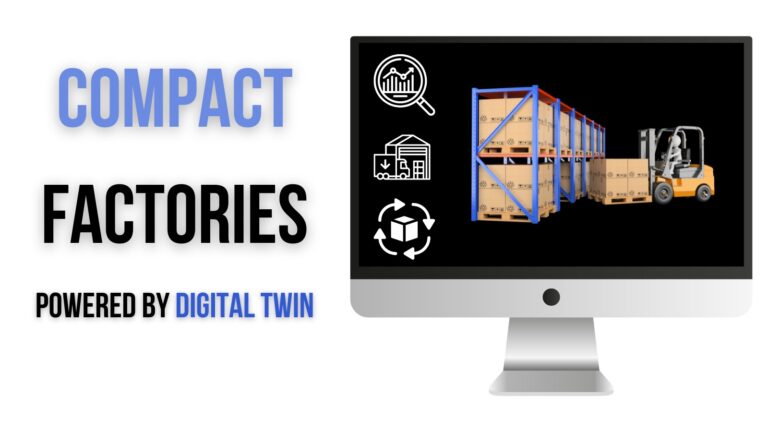Every year, industry experts predict multiple trends that will dominate throughout the year. It should be noted that a ‘trend’ does not signify that a new form of technology or feature is being introduced. Instead, it may refer to technologies in the market for several years, but their use has only recently gained momentum. In other words, a trend indicates a heightened need to incorporate such technology or practices into a company’s business operations. While an organisation that chooses not to adhere to such trends may believe that it would not affect them, unknowingly, these companies may need to invest more finances or find it more challenging to stay in line or ahead of other industrial competitors. In this ruthless business world, it should be in the company’s interest to implement as many trends related to its operations as possible. This is especially true for the warehouse industry, which demands managers to transform it into a stereoscopic warehouse. This article will go through some of the most widely acclaimed trends that will have a stronghold this year.
Top Four Trends Warehouses Should Prioritise This Year
Since COVID-19, warehouses have shifted their goals and objectives widely. The importance of remote accessibility, automation, and being more environmentally conscious are some of the few things that have gained importance in implementing stereoscopic warehouses. Regardless of this, according to the Warehouse Vision Study Report conducted by Zebra, 87 percent of industry decision-makers are still in the planning stage of automating their warehouses by 2024. This indicates that many warehouses have not yet automated their operations since 2020. Here are a few significant trends warehouses should attempt to implement in 2023:
Sustainability is Key

The looming doom of climate change has required governments to take increased responsibility. Therefore, most countries now mandate businesses to be more aware of their carbon emissions. This includes manufacturers and warehouses that consume a lot of energy due to the waste produced or the lack of action they take to maintain their assets. In such countries, fines or forms of financial fees are charged if it exceeds a specific limit. Companies have to incur unnecessary expenses, further losing their profit margins. In addition, consumers are now keener to understand how products they purchase are made. Due to these reasons, it is in the best interest of a warehouse to adopt sustainable practices in their business. Automation or implementing a stereoscopic warehouse in this regard is the easiest way. Automation eliminates the use of paper, allows companies to monitor their emissions and, where Artificial Intelligence (AI) is integrated, predicts instances where assets may break or where there is a change in consumer trends. Thus, by ensuring all assets are in their best condition and by manufacturing goods without waste, emissions are reduced to a great extent.
Using Digital Twins to Create Compact Warehouse Designs

Warehouse spacing has been an issue for companies receiving many orders. The lack of adequate planning when slotting in packages has resulted in longer process times when it comes to delivery. Since there is a delay in upgrading the system as to whether a particular space is available, new packages end up being slotted in inappropriate spaces. With digital twins, however, managers can easily keep track of the warehouse floor in real-time. Every time an object is removed from the shelf, the warehouse’s digital replica indicates this, helping the manager arrange all items. In addition to this, digital twins are a great asset when it comes to engineering and designing a better warehouse space. Modelling and simulation software are therefore used to map out and design how warehouses should look. Big data analytics, moreover, provides insightful information on how space can be optimised for inventory needs.
Gamifying the Warehouse

Warehouse gamification is set to be implemented by warehouses more this year due to the promise of increased productivity of employees. Gamification refers to a system that automatically monitors each employee’s performance without requiring a manager to constantly visit the site to monitor a person’s progress. It is said to implement a healthy working environment as not only are employees acknowledged and seen for the effort they put to work, but any biases their superiors may have is removed. The inclusion of leaderboards, reward programs, individual and team recognition and worker feedback are famous features of such a system. Therefore, it implements a transparent process for warehouse managers, making it easy to detect where productivity and performance are lacking in the factory. Amazon is one leading company that adopts gamification to motivate their employees.
Robots As A Key Driver for Automation

Multiple types of robots are presently used in warehouses as part of automation, which plays a key role in stereoscopic warehouses. According to a survey, 38 per cent of respondents acknowledge that robots improve warehouse operations in terms of accuracy and speed. Unlike humans, who require breaks, the productivity of a warehouse can be increased if tedious processes such as picking up orders are left for robots, whereas the staff can focus on more important roles. The rise in demand for robots has also been due to the need to implement safety measures in a factory. For instance, order picking can risk humans, especially when the items are heavy and large. By eliminating hazardous situations, a safer work environment is created. Robots such as AGVs, AMRs, Collaborative Robots and others are common warehouse robots that are also cost-effective.
Cerexio Smart WMS: Staying Up To Industry Needs of 2023
Cerexio Smart WMS is an advanced warehouse automation tool that takes care of everything related to warehouse management. By integrating a range of IoT sensors that tracks products in real-time, you can increase the transparency of your operations. It keeps track of your inventory, takes control over picking heavy objects, and significantly improves employee productivity. This also creates a safer working environment as humans are free from hazards which in a traditional warehouse factory were imminent. The Cerexio Smart WMS is further compatible with any smart device in your factory, be it robotic forklifts, AGVs, AMRs, NFCs, RGVs, IGVs, and UAVs. It additionally strengthens ASRS Systems and provides all updates via one single console. Cerexio helps you improve your customer relationships by updating all parties on the status of their orders and the option to track them. The solution moreover acts as a cost-effective measure, as the mobile bar scanners and cloud-based systems create a low-risk and low-cost path to automation. The AI and predictive capabilities of Cerexio help managers monitor their assets’ progress, forecast realistic financial budgets and understand the evolving consumer market.
Are you starting the new year with a list of new goals for your warehouse factory? Connect with us to see how we can help you.
Is WMS A One-Stop Solution?
Investing in multiple solutions to gain different results is costly and may hinder certain processes. Instead, it would be easier for SMEs and larger corporations to make a worthy investment by purchasing a solution that holds a multi-faceted role in ensuring the company’s success. For example, having a WMS means that all data collected through IoT sensors would be integrated into one central place. These data will effectively be processed using AI and ML capabilities to find hidden patterns and insights. Futuristic insights are thus provided to significantly help managers to assess what type of products should be sold and understand the ever-changing consumer market in this competitive world. A WMS additionally monitors the health condition of each and every asset in its factory, is generally compatible with the bots incorporated and can work together with your stereoscopic warehouse devices without having to implement many changes. Therefore, WMS is indeed a one-stop solution for all worries of warehouse managers.
